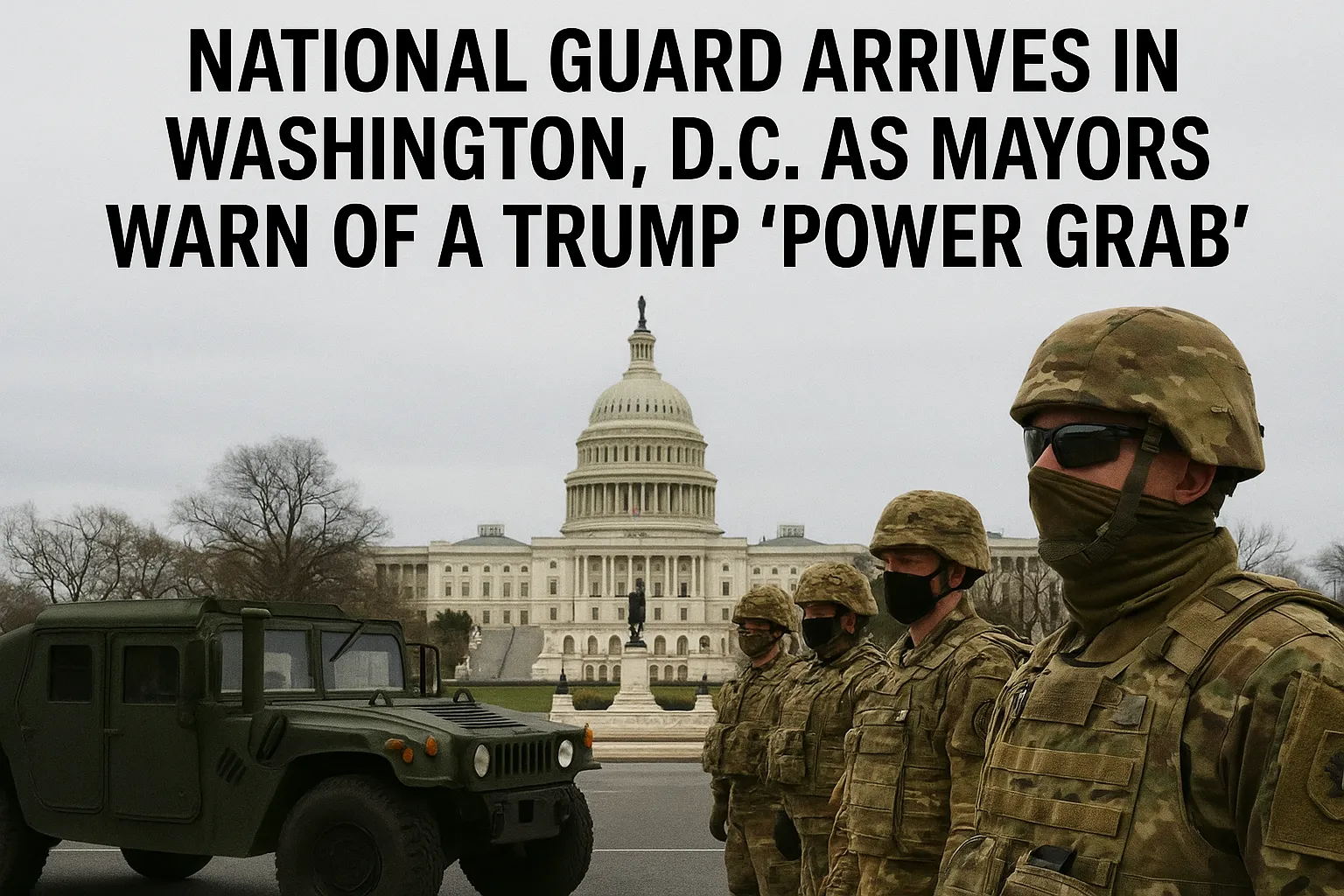National guard arrives in DC as mayors warn of Trump power grab
National Guard units began taking positions in Washington, D.C. after the White House moved to place the Metropolitan Police Department under federal direction. The step, framed by the administration as a response to public safety, drew immediate pushback from big‑city mayors who warned it risks normalizing military involvement in local policing and eroding home‑rule autonomy.
What changed in Washington
The administration announced a limited federal takeover of D.C.’s police operations alongside the activation of hundreds of Guard members for support roles. Officials say the deployment is temporary and focused on patrol augmentation and crowd‑management standby. City leaders counter that existing crime trends do not justify the scope of intervention and that local command structures should remain intact.
- Guard personnel are staging at established facilities and may assist with traffic posts, perimeter security, and logistics.
- Federal authorities cite emergency powers under D.C.’s unique governance framework.
- D.C. officials say community trust and accountability could suffer if local control is sidelined.
Mayors’ warning: a precedent beyond D.C.
Democratic mayors from several large U.S. cities urged caution, arguing that using federal muscle in a municipal context—without a clear, data‑driven emergency—sets a precedent that could be replicated elsewhere. They emphasize that local crime strategies depend on neighborhood partnerships, tailored social services, and transparent oversight that can be disrupted by abrupt jurisdictional shifts.
The legal frame—and the political stakes
Because the District is not a state, federal authorities have tools that are unavailable elsewhere. Yet the choice to exercise them is inherently political: supporters see decisive action, critics see an overreach that blurs civil‑military lines. With an election cycle heating up and national debates over crime, homelessness, and public order already polarized, both parties are reading the D.C. move as a bellwether for tactics to come.
Community impact: what residents can expect
- More uniforms, more checkpoints: Expect visible posts around transit hubs, government buildings, and demonstration‑prone corridors.
- Protest management: Permitted demonstrations may face tighter perimeter controls; civil liberties groups are watching closely.
- Services and daily life: City services continue; commuters may encounter intermittent road closures and redirected traffic.
What to watch next
Watch for the duration and scope of the federal role, coordination between local commanders and Guard leadership, and whether similar steps are considered in other cities. Legal challenges, congressional oversight moves, and new data releases on crime and public safety will shape how long the intervention lasts—and how voters interpret it.

